COVID-19 and Views on Food Safety
What’s Changed and What You Should Know Going Forward

Sitting down to a meal with family and friends is one of life’s greatest joys—and one of the most important ways we can care for our loved ones. But it’s easy to take for granted that the food we feed our families is safe to eat. The truth is that every step of the food supply chain is responsible for our food’s safety—from the farmers and ranchers who grow crops and raise livestock to the processing and packaging personnel who follow protocols in production plants to the grocery store clerks, restaurant workers, and delivery people who hand us our food. Last but not least, we as consumers play a critical role in keeping our food safe. While food safety has long been a complex issue for producers and consumers alike, the past year’s coronavirus disease 2019 (COVID-19) pandemic has made it more important than ever, as many fundamentals of buying and serving food have been radically altered. Let’s take a closer look at how COVID-19 has sparked changes in consumer views and behaviors related to food safety. The more we know about these trends, the better informed and prepared we’ll be to have safe, healthy, and delicious meals both during and after the pandemic.
Our Food Supply Chain: Background and Context
The food supply chain in the United States has successfully delivered us safe and reliable food products for decades. But this success is only made possible when each link in the chain upholds the best practices established by food science and regulatory agencies. For example, the responsibility of farmers is to ensure that crops are grown safely using clean water, high-quality soil, and regulated agricultural inputs (in the form of government-approved organic and synthetic pesticides) to ward off pests. Meeting the demands of delivering high-quality, safe, and nutritious food from farm to table takes a coordinated effort, and farmers, ranchers, and other food producers make up the critical first link in the food supply chain.
Following food producers are the warehouse workers, processing personnel, and transportation professionals who prepare, package, and ship our food to grocery stores and restaurants. These links in the food supply chain must comply with many federal and state safety regulations for distributing our food safely and dependably. Grocery store workers and restaurant professionals, the next links in the chain, also play an important role—they maintain additional standards at the local level for selling and serving food that is fresh, nutritious, and safe.
At the tail end of the supply chain is the American consumer—and contrary to what one might think, consumers actually play a huge role in upholding the nation’s food safety. However, consumers’ food safety practices vary widely from person to person, and these variances can significantly impact how safe our meals turn out to be. According to a National Academy of Sciences survey conducted in 1998, a complex mix of cultural factors impacts the public’s responses to food safety issues. These factors include values and views associated with the ideas of freedom of choice and trust in government regulation, opinions on science and technology, and consumer preferences for food labels boasting “clean” and “natural.”
The roles that each of us plays in our own personal safety, the safety of our family, and the safety of our wider communities and country have never been more evident than when we consider this year’s COVID-19 infection statistics. During this challenging time, the food supply distribution system has been put to the test. In the early days of the pandemic, restaurants closed and many of us stocked up (or panic-purchased) canned, dry, and frozen foods and watched grocery store shelves go bare. Against this quickly changing backdrop, public attitudes and behaviors toward food safety have shifted dramatically.
Food Safety Views and Practices Have Evolved Rapidly during COVID-19
To better understand these new attitudes and behaviors, the International Food Information Council (IFIC) conducted a series of surveys to understand consumers’ evolving perceptions around food and food-purchasing decisions. The 15th annual IFIC 2020 Food and Health Survey (fielded in April 2020) found that just 67 percent of consumers were confident in the safety of the U.S. food supply (which was also the case before the pandemic, in 2019, Figure 1). In the years preceding the pandemic, the Food and Health Survey had found that the top food-safety issues for consumers were foodborne illness from bacteria, chemicals in food, and carcinogens in food. However, during the pandemic, food handling and food preparation related to the risk of COVID-19 became a major issue, with 24 percent of respondents ranking it as an additional top-level concern in 2020.
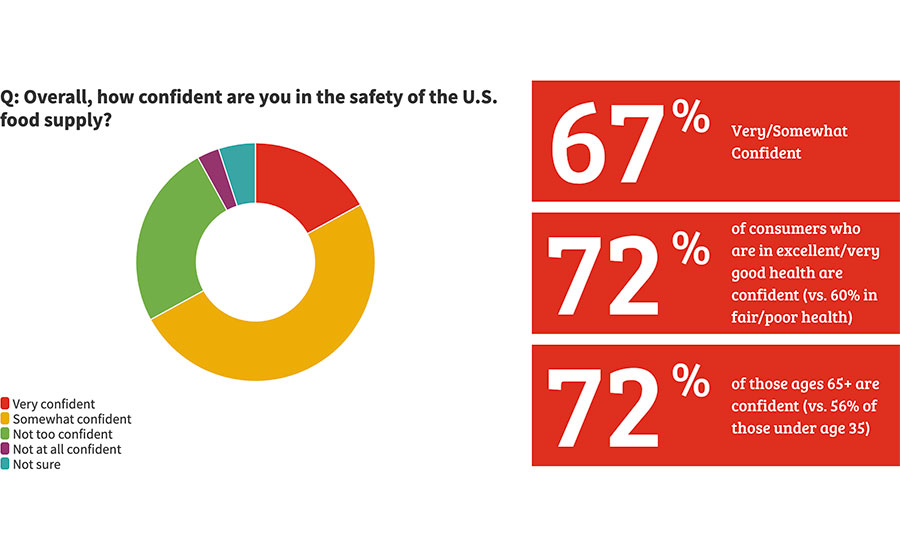
FIGURE 1. Consumer Confidence in the Safety of the U.S. Food Supply, 2020 Food and Health Survey
*Click the image for greater detail
Credit: IFIC
Approximately 1 month after the World Health Organization (WHO) declared COVID-19 a global pandemic, IFIC took the food-purchasing pulse of consumers with its April 2020 COVID-19 Survey, which looked at how many everyday practices linked to our shopping and dining-out routines had been altered—and, in many cases, overhauled. The survey showed that people were listening to the advice of public health authorities by practicing social distancing while they made food purchases—one of the top advisories from the U.S. Centers for Disease Control and Prevention (CDC). When the survey asked what people’s primary concerns were when shopping for food at a store, 42 percent of respondents said that they were most worried about the health of other shoppers, while 37 percent were worried about the health of store employees (Figure 2).
Looking for quick answers on food safety topics?
Try Ask FSM, our new smart AI search tool.
Ask FSM →
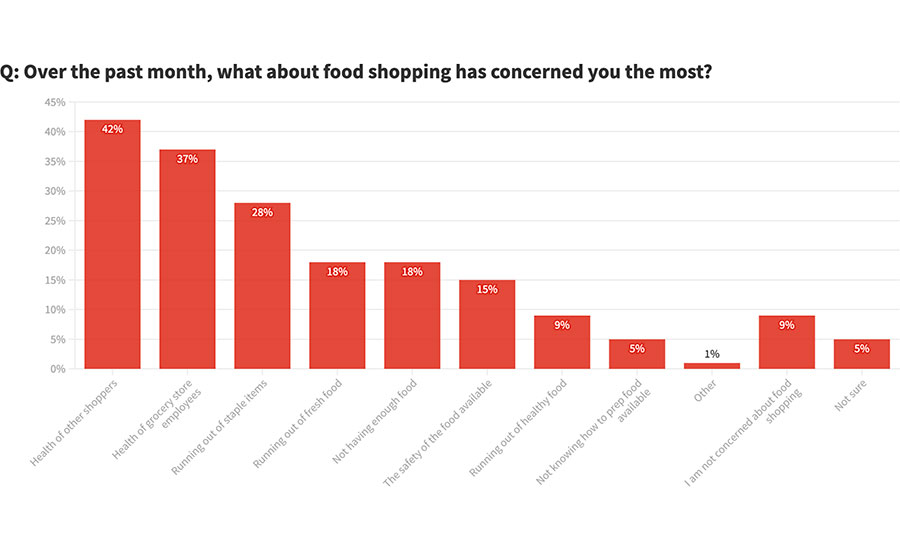
FIGURE 2. Top Concerns about Food Shopping, April 2020 Survey
*Click the image for greater detail
Credit: IFIC
The survey also asked how Americans’ food shopping habits had changed over the past month (from early March to early April); half of all survey takers reported shopping less in person. In addition, nearly 40 percent said they were buying more shelf-stable, pantry-based foods and grocery items each time they shopped to decrease trips to the store. Furthermore, nearly half of survey takers said they were eating more home-cooked meals than they had one month before the survey.
The April survey identified another important emerging trend in 2020: an increase in the use of digital platforms for food shopping and delivery. Sixteen percent of those surveyed reported that they had started shopping for groceries online, and 13 percent said they had increased the frequency of their online food deliveries. Similar to these data, 16 percent also listed online grocery shopping as a step they were taking to feel comfortable with their food safety.
One month later, IFIC’s May 2020 COVID-19 Survey recorded many of the same trends seen in April 2020, as well as new shifts in the safety precautions people were taking when acquiring their food. While survey respondents continued to practice social distancing, they also began to relax about basic germ-transfer avoidance measures. Just 52 percent of survey takers reported washing their hands after going to the grocery store, down from 63 percent in April (Figure 3). This change occurred in parallel with declines seen in many other hygienic practices, including minimizing touching surfaces while at the grocery store (39% versus 50% in April) and using wipes and hand sanitizer (38% versus 47% in April).
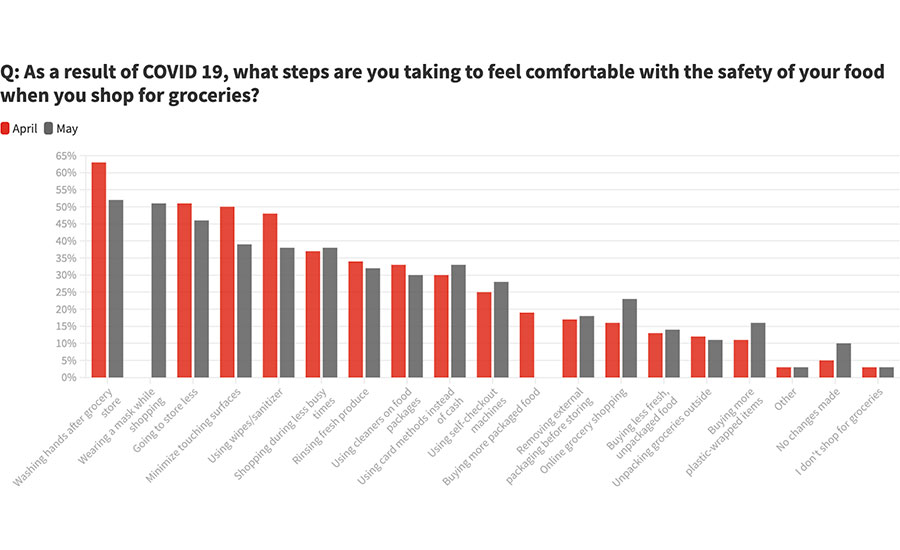
FIGURE 3. Safety Practices Consumers Take when Shopping for Groceries, May 2020 Survey
*Click the image for greater detail
Credit: IFIC
The decline in handwashing was particularly interesting given the messages from national and international public health authorities (including CDC, WHO, the U.S. Food and Drug Administration, and the Food and Agriculture Organization of the United Nations) stressing the prudence of this practice during food preparation, before and after touching others, and before and after using the bathroom, going outside, and handling potentially germ-laden objects. As these health authorities have emphasized repeatedly, handwashing is an excellent preventive practice for both healthy and COVID-19-infected individuals throughout our daily routines as a way of avoiding virus-related microbe transfers between ourselves and others.
Another emerging trend in May was the attention put toward food-related security, waste, and finances. The ability to provide enough food for one’s family was a top concern for 20 percent of survey takers. Thirty-eight percent of people reported paying more attention to the amount of money they had to spend on groceries compared with a few months prior, and 25 percent said they were paying more attention to the amount of food wasted from meals eaten at home. These data complemented the significant upticks in unemployment seen across multiple sectors of U.S. society in both April and May—according to the Georgetown University Center on Education and the Workforce, 23 million jobs were lost during this time.
COVID-19 Ushered in a New Normal
After allowing some time over the summer for people to newly adhere to food-safety practices, IFIC conducted its September 2020 Consumer Survey, which revealed the extent to which the pandemic had changed how people felt about eating food prepared outside the home. Against a background of consistent messages by academic experts, federal food safety authorities, and public health agencies citing no evidence that food or food packaging from stores or restaurants (delivery or pickup) has been a source of SARS-CoV-2 infections,¹ ² survey takers opted mostly to shop in store settings. The survey reported a net increase in shopping frequency at large supermarkets, local grocers, and corner stores, whereas fast-food and quick-service restaurants continued to see a net decrease (Figure 4).
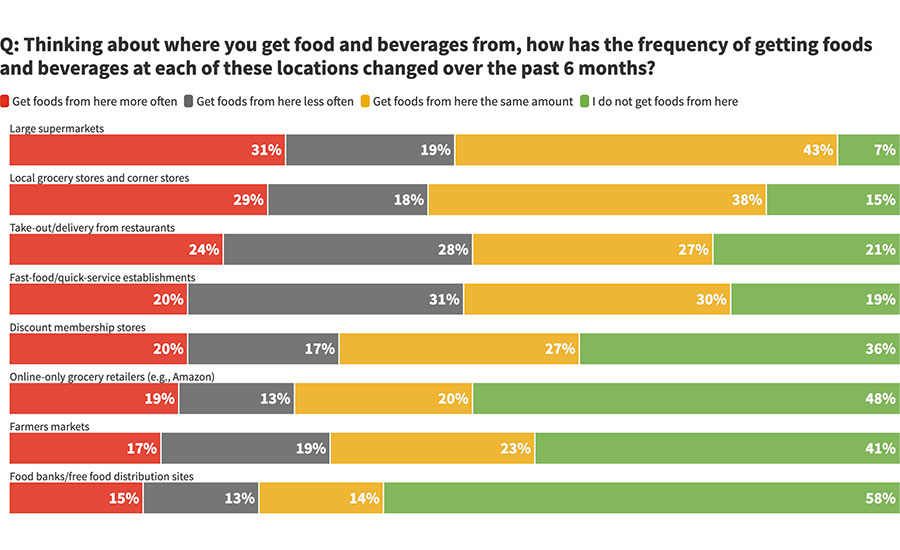
FIGURE 4. Change in Frequency of Food and Beverage Purchases at Various Locations, September 2020 Survey
*Click the image for greater detail
Credit: IFIC
Not only did many consumers opt to skip restaurant carry-out and deliveries; over half (52%) of survey takers in September said also they had not dined out at a restaurant in the past month. Eighteen percent said they’d eaten at restaurants but only in outdoor dining areas, while 21 percent said they’d eaten indoors and 10 percent said they’d dined in both indoor and outdoor restaurant dining areas. Those who hadn’t eaten at a restaurant in the past month said they’d feel more comfortable with restaurant dining if certain safety measures were in place: 44 percent said that requiring restaurant employees to wear masks would make them feel more comfortable; 34 percent said that allowing fewer people at one time or spreading out tables would ease their discomfort; and 30 percent said that an increased frequency of wiping down counters and surfaces would help. Temperature checks for staff or guests were less frequently cited as a source of comfort, with just 16 percent and 15 percent choosing those options, respectively.
By November, it appeared that people had begun to return to restaurant dining somewhat. IFIC’s November 2020 COVID-19 Report showed that just 36 percent said they had not dined at a restaurant in the past month (compared with 52% in September). Interestingly, of those that had dined in restaurants, 29 percent said they had dined in indoor settings only, 14 percent said they had dined in outdoor areas only, and 20 percent said they had dined in both indoor and outdoor areas. The higher number of people dining indoors could be attributable to cooler months bringing on weather that is not conducive to dining outdoors—or, perhaps, to the limited number of restaurants offering outdoor dining.
By the end of 2020, many of the food trends seen in earlier months had stuck, but others had shifted significantly. The IFIC December 2020 COVID-19 Survey showed that many survey takers’ concerns about food access and social distancing—such as the health of those in close proximity to them while food shopping—continued to be pertinent (Figure 5). Thirty-one percent said that the health of other shoppers was one of their top two concerns, while 28 percent expressed concern about the health of grocery store employees. Despite the lack of disruption to the U.S. food and other supply chains (which many in the early months of the pandemic had feared would happen), a significant portion of survey takers—30 percent—remained concerned about running out of staple, nonfood household items. With unemployment numbers still high at the end of the year, food insecurity also remained a cornerstone concern for one in five survey respondents: 21 percent said they were worried about their ability to provide enough food for their family.
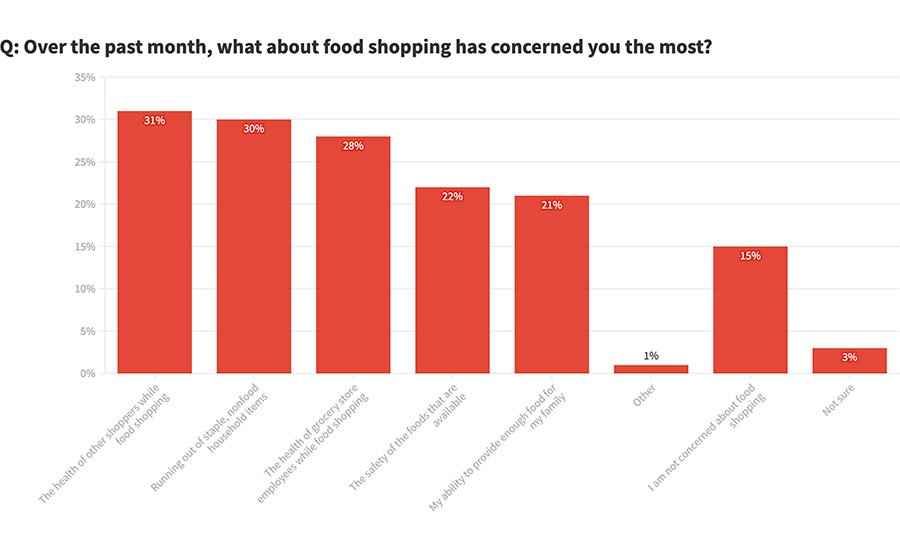
FIGURE 5. Top Concerns about Food Shopping, December 2020 Survey
*Click the image for greater detail
Credit: IFIC
Compared with the data IFIC collected for our 2020 Food and Health Survey (fielded in April 2020), the frequency of online grocery shopping had significantly increased by December—36 percent reported buying groceries online at least once a week, compared with just 11 percent who said the same in April. In April, 52 percent said they never bought groceries online; just 29 percent said the same in December.
Consumers in the Kitchen: Practicing Food Safety at Home
In the past year, COVID-19 concerns have overlapped with how to prepare meals safely in the home. While there is no scientific evidence that food is a transmission vector for COVID-19, it is still of the utmost importance that consumers ensure safe food handling in addition to other practices they observe for minimizing the risk of COVID infection in cooking environments—especially when serving food to those who are not members of their immediate household (in which cases, mask wearing, social distancing, serving food outdoors, and avoiding social gatherings altogether have become top recommended strategies). Keeping hands, kitchen surfaces, and cooking utensils clean while cooking and serving food can help combat the spread of many viruses and microbes.
To further explore food safety at home during the pandemic, IFIC conducted an additional survey in July 2020. This survey showed that a significant number of people (49%) were at least somewhat concerned about their food safety when preparing meals at home (with 24% saying they were very concerned and 25% saying they were somewhat concerned). However, despite this concern, many respondents reported often feeling as though they had control over food safety in their homes—66 percent of respondents believed they could always control food safety when consuming food at home.
Could this sense of control come from the majority of people being confident in the U.S. food supply, or could another contributing factor be that consumers have started taking actions of their own to ensure food safety? To paint a fuller picture of where this sense of command over home food safety originated, IFIC asked respondents about their in-home food preparation practices. Seventy-three percent of respondents said they practiced handwashing at home, and 65 percent said they washed cutting boards when cooking or preparing food. As for other safe food-handling practices, only 49 percent said they used a different or freshly cleaned cutting board for different food products (such as raw meat and produce), and only 32 percent said they used a food thermometer to check the doneness of meat and poultry. When it came to food handling at home, survey respondents revealed they could be doing more to ensure the safety of the meals they serve.
Using Social Media to Track Food Safety
An analysis of social and traditional media to track food safety conversations in 2020 yielded some interesting highlights. Conversations about food safety in 2020 resulted in about 1.5 million mentions, a 109 percent increase compared with 2019. Broadly, the social conversations focused on general food safety topics as well as the COVID-19 pandemic. Specifically, conversations highlighted foodborne illness, food contamination, and food allergies.
The main platforms for food safety conversations were Twitter and the traditional news, with each having about half a million mentions. Specific Twitter conversations spiked in March and April, while news coverage was more consistent and steadier over the year. The news coverage did not experience as significant an increase in 2020 growth as was seen on Twitter and Facebook. In the spring of 2020, the news focused on the impact of the COVID-19 pandemic on businesses, workers, and consumers, with many articles focusing on the COVID-19 outbreaks among workers in meat-packaging plants and others addressing fears of coronavirus exposure on food packaging and in food. In the summer and fall, news coverage of these topics waned, with more articles focusing on foodborne illness outbreaks and food safety recalls.
New Horizons for 2021: Where Do We Go from Here?
COVID-19 has had far-reaching effects, some of which won’t be known until well after global infections subside. But has there ever been a better time than a global pandemic to emphasize the need to deliver effective, science-based messages about food? While IFIC’s research in 2020 found that there are many positives to report in the realm of consumer views on our food supply, it is vital to continue delivering important messages on these topics to the public as we look forward to the end of COVID-19.
One of the most effective communication approaches is to meet the consumer where they are, providing relevant information in a timely, clear, and interactive way. Creating unified and knowledgeable information about food safety from trusted sources can greatly help all those involved in the food supply chain—especially consumers. Both traditional and social media offer excellent venues for connections and interactions between consumers and trusted sources (see “Using Social Media to Track Food Safety”).
The COVID-19 pandemic has created unique opportunities for collaboration and information sharing regarding food safety among federal agencies, food safety organizations, industry producers, and the general public. As we aim to stay healthy in 2021 and look ahead to post-COVID days, let’s keep up our efforts to ensure that our food—and the way we interact with it—is as safe, nutritious, and reliable as possible.
References
- www.cdc.gov/coronavirus/2019-ncov/daily-life-coping/food-and-COVID-19.html
- www.fda.gov/emergency-preparedness-and-response/coronavirus-disease-2019-covid-19/covid-19-frequently-asked-questions
Tamika Sims, Ph.D., is senior director of food technology communications at IFIC.
Ali Webster, Ph.D., R.D., is the director of research and nutrition communications at IFIC.
Joseph Clayton is the CEO of IFIC.








